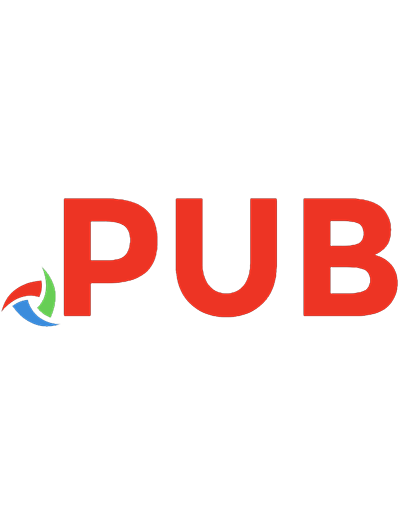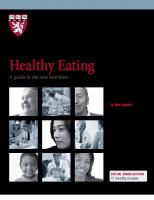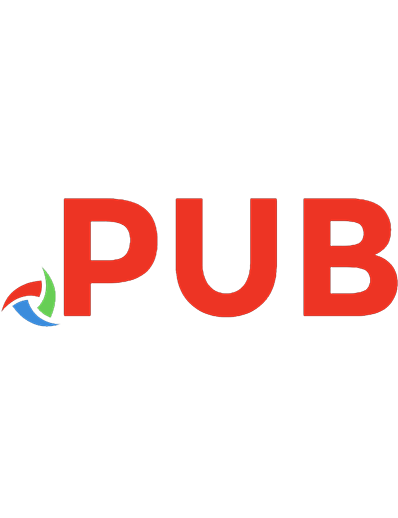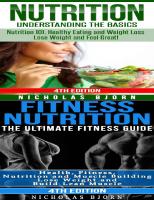Nutrition for Healthy Hair: Guide to Understanding and Proper Practice 3030599191, 9783030599195
The quantity and quality of the hair are closely related to the nutritional state of an individual. And yet, there is ha
1,092 201 13MB
English Pages 306 [312] Year 2021
Table of contents :
Preface
Acknowledgments
Contents
About the Author
1: Introduction
2: Brief History of Human Nutrition
2.1 Prehistory
2.2 Antiquity
2.3 From Galen to Lind
2.4 From Lavoisier to the Modern Sciences
2.5 From Hopkins to the Present
References
3: Nutrition Basics
3.1 The Food Pyramid
3.1.1 Superfoods
3.1.2 Functional Foods
3.1.3 Prebiotics, Probiotics, Synbiotics
3.1.4 Medical Nutrition Therapy
3.2 World Nutrition Facts
References
4: The Hair Cycle and Its Relation to Nutrition
4.1 Pathologic Dynamics of Hair Loss as They Relate to the Hair Cycle
4.1.1 Dystrophic Anagen Effluvium
4.1.2 Telogen Effluvium
4.1.3 Performing the Trichogram as a Diagnostic Test
4.1.3.1 Anagen with Root Sheaths
4.1.3.2 Anagen Devoid of Root Sheaths (Dysplastic Anagen Hair)
4.1.3.3 Catagen
4.1.3.4 Telogen
4.1.3.5 Dystrophic Anagen
4.1.3.6 Broken-Off Hairs
4.1.3.7 Miniature Hairs
4.1.4 Value of Multielement Hair Analysis
4.2 Nutritional Requirements for Hair Growth and Pigmentation
4.2.1 Protein and Calories
4.2.2 Micronutrients (Vitamins, Minerals)
4.2.3 Life Cycle Needs
4.2.3.1 Infancy
4.2.3.2 Childhood
4.2.3.3 Adolescence
4.2.3.4 Adulthood
4.2.3.5 Pregnancy and Lactation
4.2.3.6 Smoking
4.2.3.7 Medications
References
5: Nutritional Disorders of the Hair and Their Management
5.1 Inborn Errors of Metabolism
5.1.1 Copper (Menkes Kinky Hair Syndrome and Wilson’s Disease)
5.1.2 Zinc (Acrodermatitis Enteropathica)
5.1.3 Biotin (Biotinidase and Holocarboxylase Synthetase Deficiency)
5.1.4 Amino Acids
5.1.4.1 Homocystinuria
5.1.4.2 Hartnup Disease
5.1.4.3 Phenylketonuria
5.1.4.4 Methionine Malabsorption Syndrome (Oasthouse Urine Disease)
5.1.4.5 Citrullinemia and Argininosuccinic Aciduria
5.2 Acquired Deficiency Disorders
5.2.1 Protein-Calorie Malnutrition
5.2.1.1 Kwashiorkor
5.2.1.2 Marasmus
5.2.2 Deficiency of Essential Fatty Acids
5.2.3 Biotin Deficiency
5.2.4 Vitamin C Deficiency
5.2.5 Vitamin B12 Deficiency
5.2.6 Niacin Deficiency
5.2.7 Iron Deficiency
5.2.8 Zinc Deficiency
5.2.9 Copper Deficiency
5.2.10 Selenium Deficiency
5.2.11 Vitamin D Deficiency
5.2.12 Multiple Nutritional Deficiencies
5.3 Complex Nutritional Disorders
5.3.1 Gluten Sensitivity
5.3.2 Junk Food and Obesity
5.3.3 Deficiencies from Bariatric Surgery
5.3.4 Anorexia and Bulimia
5.3.5 Deficiencies of Alcoholism
5.3.6 Aging and Diet
5.3.7 Controversies in the Oncologic Patient
References
6: Value of Nutrition-Based Therapies for Hair Growth, Color, and Quality
6.1 Traditional
6.1.1 Food Based
6.1.2 Millets
6.1.3 Nutritional Yeast
6.1.4 Gelatin
6.1.5 Fenugreek
6.1.6 Saw Palmetto
6.1.7 Black Cohosh
6.1.8 Yam
6.1.9 Soy
6.1.10 Marine Complex
6.2 Evidence Based
6.3 From Chinese Medicine and Ayurveda
6.3.1 He Shou Wu
6.3.2 Panax Ginseng (Ren Shen)
6.3.3 Dong Quai
6.3.4 Lingzhi
6.3.5 Gingko biloba
6.3.6 Green Tea
6.3.7 Shou Wu Chih
6.3.8 Ayurveda
References
7: Safety and Efficacy of Nutrition-Based Interventions for Hair
7.1 Bioavailability
7.2 In Vitro Efficacy Assessment
7.2.1 2-D Assays
7.2.2 3-D Assays
7.2.3 Whole-Hair Follicle Culture
7.3 Clinical Efficacy
7.4 Safety Issues
7.4.1 Hypervitaminosis A
7.4.2 Selenosis
7.4.3 Iron Overload
7.4.4 Zinc Overload
7.4.5 Biotin
7.4.6 Vitamin B6
7.4.7 Vitamin D Toxicity
7.4.8 Shark Cartilage
7.4.9 Toxicities from Chinese Herbs and Ayurveda
References
8: Concluding Remarks
8.1 Guidance for Supplementation
References
Index

![Nutrition for Healthy Hair: Guide to Understanding and Proper Practice [1st ed.]
9783030599195, 9783030599201](https://dokumen.pub/img/200x200/nutrition-for-healthy-hair-guide-to-understanding-and-proper-practice-1st-ed-9783030599195-9783030599201.jpg)




![Nutrition for Healthy Skin: Strategies for Clinical and Cosmetic Practice [1 ed.]
3642122639, 9783642122637](https://dokumen.pub/img/200x200/nutrition-for-healthy-skin-strategies-for-clinical-and-cosmetic-practice-1nbsped-3642122639-9783642122637.jpg)

![Encyclopedia of Foods: A Guide to Healthy Nutrition [1 ed.]
9780122198038, 0122198034](https://dokumen.pub/img/200x200/encyclopedia-of-foods-a-guide-to-healthy-nutrition-1nbsped-9780122198038-0122198034.jpg)
![Encyclopedia of Foods: A Guide to Healthy Nutrition [1st ed.]
0122198034, 9780122198038, 9780080530871](https://dokumen.pub/img/200x200/encyclopedia-of-foods-a-guide-to-healthy-nutrition-1stnbsped-0122198034-9780122198038-9780080530871.jpg)
